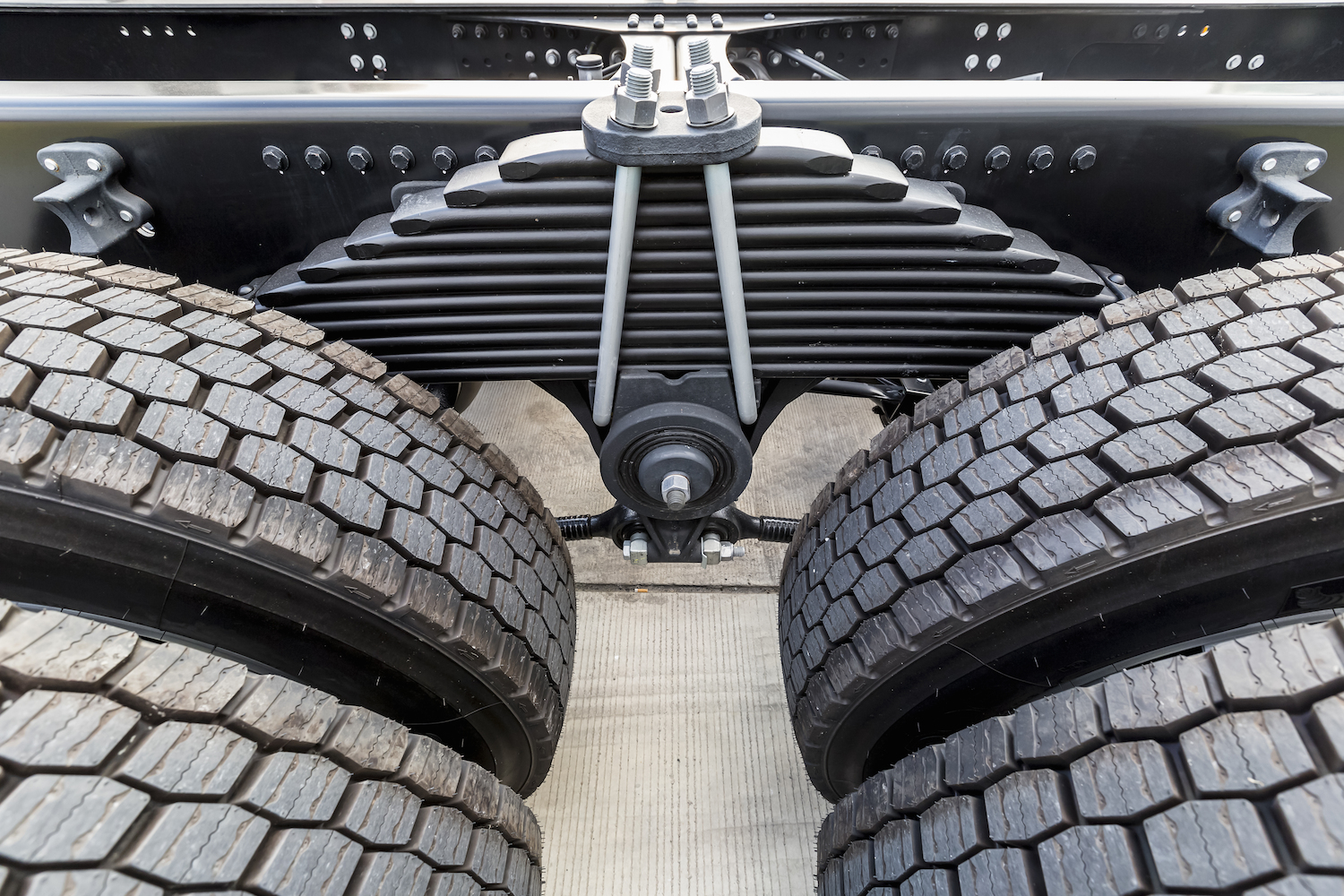Tire failures represent 25% of all breakdowns for over-the-road trucking. That leads to messed-up delivery schedules and the loss of driving hours, plus the safety concern for the driver stranded on the side of the interstate.
The largest issues related to tire failures are missing tread and/or low tread depth. In addition to checking your tires’ tread depth at least weekly, it’s also important to ensure that all the tires on your truck are wearing at the same rate.
For example, if you replace a tire that has become dangerous, you need to make sure that you replace it with the same make and model, or at least with the same depth configuration to the tire on the same axle. Just using the same tire size doesn’t cut it. Otherwise, the new tire could overcompensate due to a deeper tread position, and it will wear faster and not perform to the maximum life span.

Since the axles are supposed to be level, it is plausible that a mismatched tire with the lesser depth of tread may barely touch the ground, causing the tire with deeper tread to carry the weight that should be shared by both. Not replacing both tires is a common mistake, especially when the “other” tire might be within just millimeters from being replaced anyway. Even if both tires are relatively new or even retreads, different tread configurations will cause one to wear faster. That costs you more money in the long run.
MONEY-SAVING TIPS:
1. Don't think that you can save money by replacing only one tire in a pair of drive or trailer tires. The new tire with deeper tread will most likely wear down prematurely, causing you to have to replace it more quickly. Even though it is more expensive to replace both simultaneously, especially when they are close to needing to be replaced anyway, they will wear at the same rate.
Also Read: How to Prevent Irregular Wear in Wide-Base Single Tires
2. Many truck drivers do a visual inspection of the depth of their tire tread when they check their tires with a "tire thumper." This may not be adequate, depending on your company's requirements. If you are an owner-operator, measuring the depth may be more important to you because you're paying for the tires.
3. Watch for other problems associated with uneven wear on a tire tread, which may be an indication of a problem. For example, a tire that wears more on one side than another may be a sign that your truck has an alignment problem. Replacing the tire in this case will not solve the problem. The truck must first be realigned.
4. Experts recommend that you measure tread depth at least once a week.
Different commercial truck tires have different original tread depths when they are brand new, as reported by tire manufacturers. For example, a new Michelin XZE2 (steer tire), which starts with 22/32nds of original tread depth, has an original diameter of 41.3" in size 11R22.5, while a new Michelin XDA5+ (drive tire), with an original tread depth of 30/32nds, has an original diameter of 41.7" in the same size.
Michelin recommends 1) keeping the difference in tire height between the two tires to 1/4 inch or less, measured at the center of the tread when inflated to working pressure, and 2) keeping the difference in circumference between the two tires to 3/4 inch or less, measured around the center of the tread when inflated to working pressure.
Goodyear suggests that, if a difference is unavoidable, mount the smaller tire on the inside. The outside tire wears faster than the inside tire. As it wears, its diameter will approach that of the inside tire. Additionally, any crown on the road will favor the placement of the smaller diameter tire on the inside.
This article was originally featured on Truckers Edge.